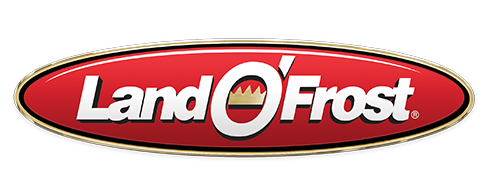While many foods claiming to be healthy are good for you, some aren’t as nutritious as you may think. When food shopping, don’t assume words like “healthy” or “light” are accurate.
Here are a Few Foods as an Example of Why we Should Pay Attention to Packaging and Labels
“Light” salad dressing
Problem:
When you’re trying to make healthy decisions, salad seems like a no-brainer. You might opt for the “light” salad dressing to make salad even healthier, but beware. Light dressing often has MORE sugar than regular dressing.
Adding sugar instead of fat is an approach some foods take to be considered light. This lowers the calories and makes up for the decrease in flavor and texture quality by adding things like modified corn starch and more sugar. If lower fat just means more sugar, what’s the point?
Solution:
Look for dressings that have fewer ingredients, and make sure they are names you recognize. If you prefer richer, more high calorie and fat dressings, like ranch, Caesar or thousand islands, think about mixing a small teaspoon with a squeeze of lemon and ½ tsp of water before tossing with your salad. You’ll get the same flavor while getting rid of some calories and fat.
You can even make simple dressings at home using an olive oil base! Olive oil is made of monounsaturated fatty acids. the “good” fats, that studies show protect your heart.
Mix olive oil and lemon for a simple dressing. Or add Dijon mustard and balsamic vinegar for a spicy-sweet flavor. Just a bit of each ingredient mixed well makes a very tasty dressing that brings out the flavor of your crisp veggies without overpowering them. Try these healthy salad dressings,
walnut dijon,
orange zest and
5 more tasty varieties.
Energy bars
Problem:
We often think energy bars are a healthy snack or meal replacement. But too often they are loaded with sugar, and provide little or no fiber and protein. Energy bars are incredibly popular, but not all bars are created equal — some are just candy in disguise. What’s the best way to spot the good from the bad?
Solution:
First check the ingredients list. If it has nuts, fruit, chocolate, crisped rice, coconut and other ingredients you recognize, you are off to a good start. Manufacturers list ingredients in order of highest amount in the product to lowest, so avoid anything that lists sugar or cane syrup as its first or second ingredient. The more ingredients that you don’t recognize probably means you should skip it.
Also check the nutrition label. How much sugar is in the bar and what’s the source? Choose a bar with fewer total grams of sugar and lists natural fruit sources like dates and bananas. Stay away from sources of sweetness like added sugar or artificial sweeteners. If your bar doesn’t list fruit as an ingredient, then stick to 5g of sugar or less.
While convenient, energy bars can be expensive. Instead, grab a banana and a handful of nuts. Or opt for an apple and a few slices of roasted turkey. Yogurt with granola also makes a great pick-me-up snack. Check out these
50 healthy snacks your kids will love.
(Some) yogurt
Problem:
Not all yogurt is the same. Many flavored yogurts are packed with sugar and even artificial flavors and colors. Be especially weary of the 100-calorie yogurts that claim to be healthier. Yogurts are a hidden source of added sugars and artificial sweeteners.
Note the difference between natural and added sugar in yogurt. Added sugar comes from ingredients like sugar or concentrated fructose, that are added to make it sweeter. Naturally occurring sugar comes from lactose in milk or fructose in fruit. So even plain yogurt will have some naturally occurring carbohydrates from lactose.
Decipher the nutrition label: 8 ounces of plain yogurt has about 15 grams of naturally occurring sugar and Greek yogurt has about 8 grams in a 7 ounce container. Anything more than that is added. Remember, 1 teaspoon of sugar = 4 grams, so yogurt with 23 grams of sugar has 2 teaspoons of added sugar.
Solution:
Aim for low-fat or non-fat plain Greek yogurt. For a touch of sweetness, top with fresh fruit or honey. Even though honey is high in sugar, you control how much goes in. Keep in mind, honey, white sugar, brown sugar and natural sugar are all sugar, so just use them sparingly.
Top with real fruit to give yogurt a punch of extra vitamins and nutrients. You can even buy frozen fruit and heat it – it will taste sweeter than fresh fruit when added to plain yogurt.
Just remember, when you see words like “healthy” or “light” on labels, it makes sense to double check the ingredients to see if this is the case. It’ll ensure you’re spending money on what you want.
Reference: Michas G, et al, 2014. Dietary fats and cardiovascular disease: Putting together the pieces of a complicated puzzle. Atherosclerosis, Vol 234, Issue 2, June 2014.



